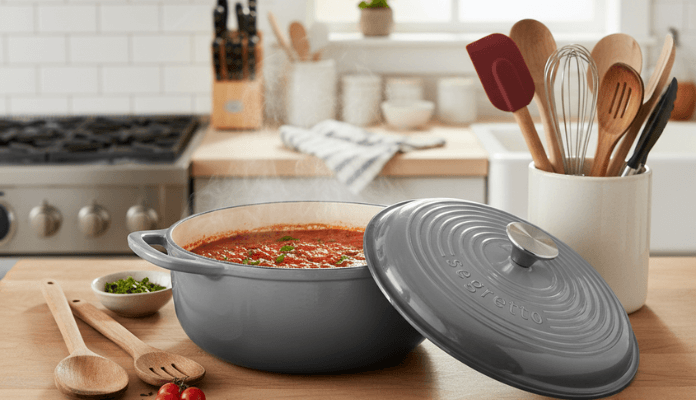
The Dos and Don’ts of Cooking Utensils: What Really Belongs in Your Pan
The right pan deserves the right partner. Cooking utensils may seem like an afterthought, but using the wrong one can scratch, warp, or wear down your cookware long before its time. Protect your investment (and your dinner) by learning what truly belongs in your pan—and what doesn’t.

The Dos: Utensils That Keep Cookware Safe
1. Silicone Tools
Heat-resistant, flexible, and gentle, silicone utensils are perfect for nonstick and coated cookware. They won’t scratch surfaces, and they handle high heat without melting.
2. Wooden Spoons and Spatulas
Classic for a reason—wood is durable yet soft enough to protect delicate coatings. Plus, it won’t react with acidic foods like tomato sauces.
3. Nylon Utensils
Affordable and safe for nonstick, nylon works well for everyday cooking. Just keep them away from very high heat, since they can warp or melt if left on a hot surface.
4. Stainless Steel with Stainless Steel
If your pan is stainless steel or cast iron, stainless steel utensils are safe to use. They won’t harm the surface and give you sharp, precise edges for flipping, stirring, and scraping.
The Don’ts: Utensils That Do More Harm Than Good
1. Metal on Nonstick
Metal spatulas, whisks, and spoons can gouge nonstick coatings in seconds. Once scratched, the pan loses its nonstick ability and becomes harder to clean.
2. Knives as Scrapers
Tempted to scrape burnt food with a knife? Don’t. It not only damages the cookware but also dulls your knife. Use a wooden or silicone scraper instead.
3. Plastic of the Wrong Kind
Cheap plastic utensils can melt or release chemicals when exposed to heat. If it’s not labeled heat-resistant, keep it out of the pan.
4. Glass or Ceramic Tools
Rarely used, but still risky—glass or ceramic can chip, crack, or even shatter when they hit hot cookware.
Smart Habits to Remember
-
Match utensil to cookware type: silicone/wood/nylon for nonstick, metal for stainless steel and cast iron.
-
Rotate utensils to avoid wear in one spot.
-
Replace worn, warped, or melting tools before they damage cookware.
-
Always rest utensils on a spoon rest or plate, not inside a hot pan.
Final Thought
Your cookware is only as safe as the utensils you use with it. Choosing wisely doesn’t just protect your pans—it makes cooking smoother, easier, and more enjoyable. Treat your pans well, and they’ll return the favor with years of dependable service.
